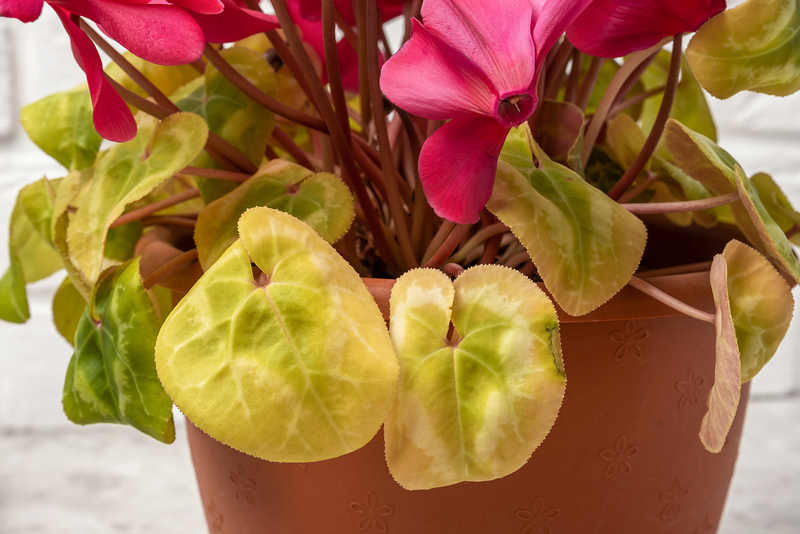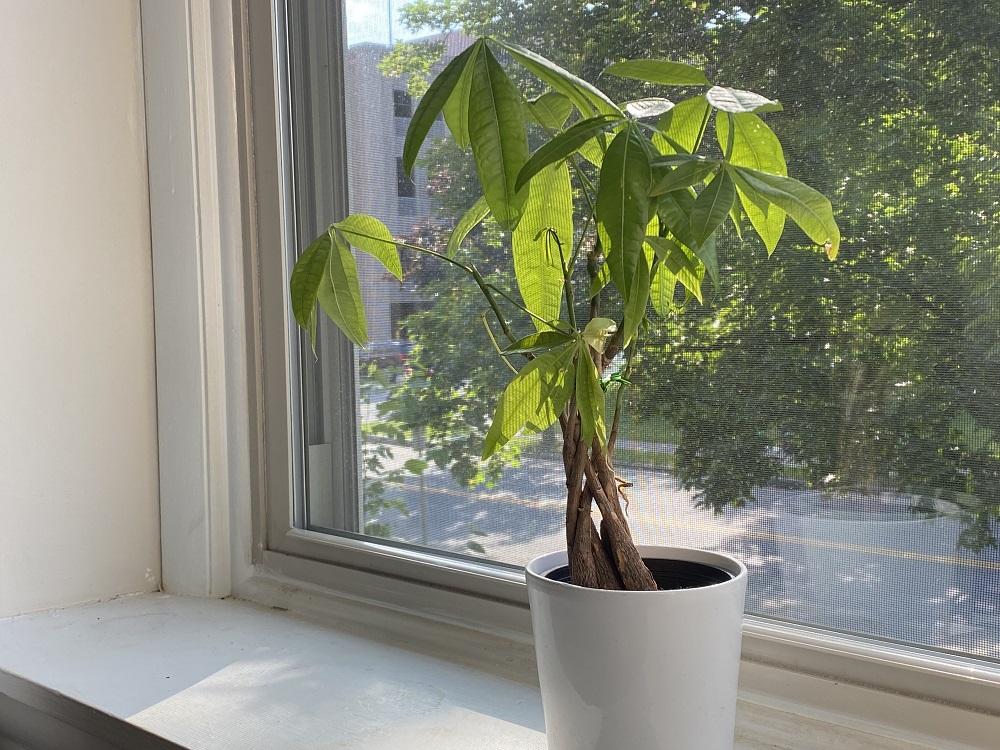When something is causing plant stress or damage, its leaves will often turn yellow as part of the repair process. Indoor gardeners will often see yellowing leaves as the first sign of something wrong with their beloved houseplants.
While the color change from verdant green to yellow may seem alarming, the good news is that it’s often not an emergency. If your plant’s leaves are starting to turn yellow, you likely have plenty of opportunities to bring your plant back to full health.
Here are some reasons why plant leaves turn yellow and what you can do to fix this problem.
Common Causes for Yellowing in Houseplant Leaves
Since indoor plants can’t just tell their caretakers when something is causing them stress, it’s up to gardeners to interpret symptoms like yellowing to diagnose a possible issue. A variety of different factors causes yellow leaves. Here are some of the most common reasons why your plant’s leaves are turning yellow.
Moisture Stress
Some plants are susceptible to certain water levels. Overwatering and underwatering are some of the most common causes of yellowing. Moisture stress has a few other symptoms to show whether your plant is drying out or drowning.
If your plant is yellow and browning or crisping at the edges with arid soil, it likely isn’t getting enough water. Meanwhile, you might be overwatering your plant if your plant is bright yellow, with drooping leaves and black stems. Moisture stress is one of the most manageable plant problems to diagnose and treat, as you have to either water your plant more or let it dry out.
Nutrient Deficiency
The origin of your plant often dictates how many nutrients it gets from the soil. For example, some succulents are used in environments with minimal nutrients, while some tropical plants may need a more complex mix of fertilizers.
People with hard water can experience nitrogen deficiency because of the high level of dissolved calcium in their water. One of the best ways to diagnose nutrient deficiency in plants is to use an at-home soil testing kit to see what minerals your soil lacks. Once you know the mineral makeup of your soil, you can buy an appropriate plant food to remedy the situation.
Physical Damage
Some plants may turn yellow if pests or other animals have damaged them. This damage causes stress for the plant, using most of its energy to repair itself. It’s important to carefully inspect all houseplants regularly to ensure that there aren’t any pests like aphids or spider mites causing stress to your plant.
Temperature Stress
Most people know that a temperature change can contribute to a color change in plants. However, it’s hard to imagine that it can happen in our climate-controlled homes. Most houseplants are tropical species that are very sensitive to even minimal temperature changes.
If your plant is yellowing, check to make sure there aren’t any cold drafts nearby that could add stress to the plant. In the summer, make sure that all plants are out of the range of air conditioners to stay at the proper temperature.
As you assess your plant’s temperature requirements, it’s also good to ensure that your plants get the right amount of light. Some plants need full sun, while others may thrive with indirect light. These needs may require that you change the location of your plants throughout the year, so they get what they need.
Natural Age
As houseplants grow, they’ll naturally shed leaves to make room for new growth. If a few lower leaves are yellow and fall off, pay attention to the rest of the plant to ensure it’s not spreading. If the top of the plant seems healthy and thriving, it’s likely just shedding older leaves.
Your favorite plant will need several accommodations over time. As a houseplant grows, it’ll develop a larger, more extensive root system. Make sure to regularly repot your plant so that it doesn’t become rootbound in its pot.
How to Repair Yellow Leaves
If your plant is turning yellow due to stress from a pest infestation, taking the time to deal with the infestation will help it recover. Neem oil is an excellent insecticidal treatment that can help eliminate everything from spider mites to mealybugs and aphids.
Properly fertilizing your plant is likely one of the most challenging resolutions, as it might require a little chemistry. At-home soil testing kits make getting the right balance of potassium, magnesium, and calcium easier. You can likely find a potting mix perfect for your type of plant so that it can have the ideal nutrient mix.
Is it Best to Cut off Yellow Leaves?
If you catch leaf yellowing at an early stage, you might be able to resolve the issue, but it’s not likely. It’s better to cut off yellow leaves once you’ve diagnosed the problem to give your houseplant the best chance of getting better. Cutting off yellowed leaflets from your plant preserves the energy it’d otherwise send to that limb, meaning it can devote more resources to healing from whatever damage it initially incurred.
Yellow leaves aren’t anything to panic over – but they are something that you should grab your attention. This subtle color change is usually the first sign of trouble in a houseplant. If you want to save your plant, you must act quickly and diagnose the problem before it spreads. Luckily, there are plenty of simple solutions that you can implement quickly to ensure that your plant recovers as fast as possible.
Conclusion
Once you know the cause of your plant’s yellow leaves, it’s usually easy to resolve the issue. For example, building a watering schedule is one of the best ways to prevent moisture stress. Similarly, you could add drainage holes to your pots so that excess water can escape. Properly maintaining your plant’s moisture balance is another way to prevent root rot, a dangerous problem for indoor potted plants.
Similar Posts
How to Take Care of an Aglaonema Plant
What are Good House Plants for Low Light?
Can you Repot Plants in the Winter?
How to Take Care of a Mint Plant
Should Houseplants Be in Direct Sunlight?
How to Take Care of a Money Tree Plant
Ways to Take Care of a Jade Plant
How to Take Care of an Aloe Plant
How to Get Rid of Buds on Houseplants
Should Houseplants Be Watered from the Top or Bottom?
How to Take Care of an Azalea Plant?


